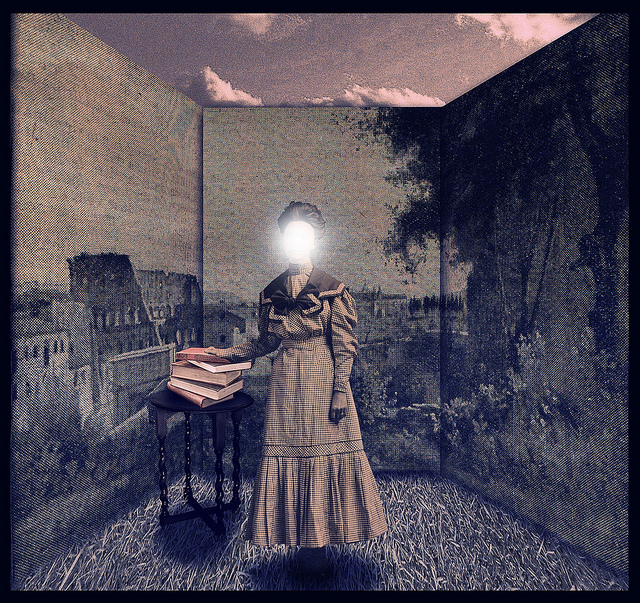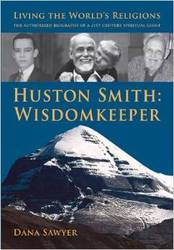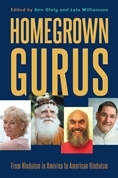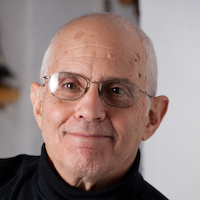God, Gurus and One Amazing Life
Books on spirituality and religion come across my desk on a regular basis.
I don’t have time to read most of them, but three recently arrived in close proximity, and since they were authored by scholars I know and trust, I cracked them open. All three were intriguing, illuminating and eminently readable.
They are also related to one another in ways that might not seem obvious on the surface. The authors are all products of the historic transmission of India’s vast body of spiritual wisdom to America, whose impact I chronicled in my own book, American Veda, and each book reflects a different aspect of that 200-year story that led to today’s yoga boom.
Huston Smith: Wisdom Keeper by Dana Sawyer.
It is hard to argue that any scholar has had a bigger impact on the comparative study of religion than the subject of this authorized biography. Huston Smith’s seminal textbook, The Religions of Man (later retitled The World’s Religions), was groundbreaking at the time of its publication in 1958 because, says biographer Sawyer, it described religions “as their followers understood them, while avoiding evaluations or judgments almost entirely.”
Back then, the Eastern traditions in particular were treated by scholars with ignorance, disrespect and even contempt. Smith changed all that, largely because his own perspective was transformed by his study of Vedanta, the principle philosophy of Hinduism, under the tutelage of Swami Satprakashananda at the St. Louis Vedanta Society. Raised in China by missionary parents, Smith’s exposure to the Upanishads and his experience with meditation, opened him up personally and professionally. His subsequent work was framed by the Hindu perspective codified in the Rig Veda as “Truth is One, the wise call it by many names.”
Smith bristled when naively accused of thinking that all religions are the same. He made the important distinction between the exoteric aspects of religion—rituals, doctrines and other areas of unbridgeable difference—and the esoteric component, where inner experience of the Divine generates striking similarities across traditions. That perspective came to be called Perennialism in the West, and Smith was perhaps its leading voice. Readers and PBS viewers came to know him as a Christian-Hindu-Buddhist-Sufi-yogi proponent of trans-religious understanding.
Dana Sawyer, a professor of religion and philosophy at the Maine College of Art, recounts Smith’s fascinating and adventurous life, which was marked by insatiable intellectual hunger and colorful friends—J. Krishnamurti, Aldous Huxley, Joseph Campbell, the Dalai Lama, etc.—with insight, rigor and easy-to-read charm.
Homegrown Gurus: From Hinduism in America to American Hinduism, edited by Ann Gleig and Lola Williamson.
The spiritual explorers of Huston Smith’s generation helped open the minds of baby boomers to Eastern philosophy in the 1960s, which led directly to the enthusiastic embrace of gurus, swamis and yoga masters.
Some of the seekers who dove deeply into the Hindu dharma became teachers themselves, and several are profiled in this anthology of scholarly articles edited by professors of Religious Studies at, respectively, the University of Central Florida and Millsaps College. Gleig and Williamson coauthored a lucid overview of the subject and assembled articles that fall easily on the non-academic mind.
Readers will learn about the lives and work of influential teachers, both well-known and little-known, in this penetrating look at the meeting ground of East and West, ancient and modern, tradition and innovation.
God is Love: A Guide to the Heart of Judaism, Christianity and Islam, by Mirabai Starr.
One of the figures profiled in Homegrown Gurus is another of Huston Smith’s friends, Ram Dass, whose evolution from Harvard psychologist Richard Alpert to LSD outlaw (with Timothy Leary) to devotee of his guru Neem Karoli Baba to spiritual teacher to beloved elder is familiar to many. In the late-sixties, Ram Dass and friends gathered around the Lama Foundation in Taos, New Mexico.
Among those who settled there were the parents of Mirabai Starr. That someone raised by secular Jews in a hippie community, where she was exposed early on to Hindu and Buddhist teachings, ended up a translator and proponent of Christian mystics such as John of the Cross and Teresa of Avila is emblematic of an important development: the rediscovery of the esoteric depths of the Western religious traditions.
Starr, who teaches at the University of New Mexico-Taos and leads workshops everywhere, is a strikingly soulful voice in that revival, and her background enables her to locate and illuminate what she calls “the living heart of every spiritual tradition,” in ways that breathe life into the core insights of Perennialism. As Andrew Harvey says in a back cover blurb, her book “will expand your vision and inspire your search.”
All religious traditions are different in important and often disturbing ways.
And yet, when diligently pursued to their innermost depths, they meet, like rivers in an ocean, in oneness and universal love. Access to Eastern wisdom has made that revelation an experiential reality in the today’s world, and these three books, each in its own way, inform and advance that transformational development.
Love elephant and want to go steady?
Sign up for our (curated) daily and weekly newsletters!
Editor: Catherine Monkman
Photos: Courtesy of Amazon, Caroline/Flickr






Read 0 comments and reply